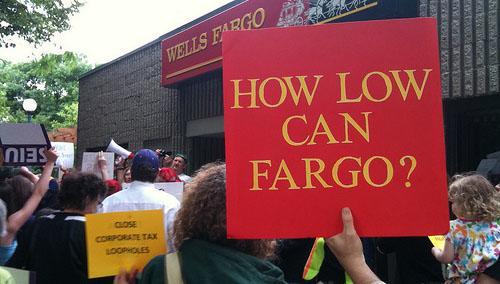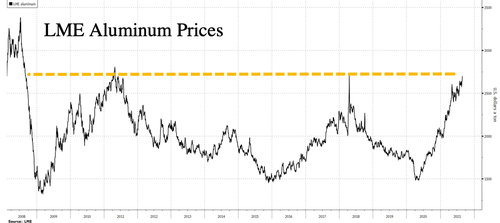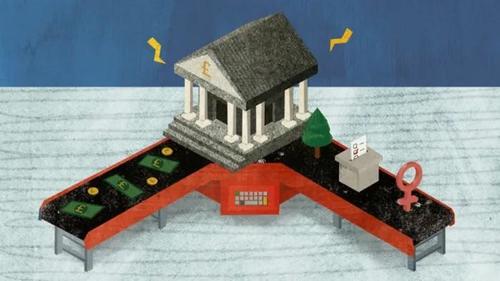Blain: The Fed’s Taper Is Going To Expose A Fundamentally Broken Market
Submitted by Bill Blain via Blain’s Morning Porridge
“Anyone who claims to know the future of interest rates is certifiable.”
The great Autumnal Bond Funding Season is upon us, but the looming taper of Central Bank Asset Purchase Schemes could well expose just how broken and dysfunctional bond markets have become. Markets always over-react to stress and panics, but when markets struggle with price discovery and liquidity, the coming sell off could be magnified, which means a great buying opportunity in bonds may be coming!
* * *
There is lots to worry about this morning – the consequences of the Afghan Skedaddle on perceptions of the US, the inflation threats central banks wish us to believe are “transitory”, Hurricane Ida’s trail of insurance claims, the rising backlash against ESG, and the apparent emergence of a new SuperCovid variant that’s more infectious…
Instead.. this morning let’s think about the bond market, because in the bond market there is always truth… It’s still August (for a few more hours at least) but today marks the start of the 2021 Bond Market Autumn Steeplechase. With bond yields still falling despite taper talk and record stock market levels – it promises to be a fascinating season.
The September funding Boom is a traditional feature of the Eurobond market year. It’s when all the banks and bankers realise year-end is approaching and get desperate for fees from business closed, pushing their capabilities by being seen to do deals and rise up the league tables. Smart corporate treasurers will be dangling mandates for deals in front of their bankers – knowing this is the best time to get the finest and tightest terms because this when their bankers are most desperate. The result is we’ll see a deluge of new bond supply.
Normally, the funding orgy lasts a couple of weeks before investors start to gag on a succession of too tightly priced deals that widen soon after launch. But, hey-ho, pricing doesn’t matter because Central Banks are all out there buying corporate bonds as part of their QE Asset-Buying Programmes. So… it’s possible to sell just about anything…
This year corporate treasurers know the Taper is coming – that’s what Jerome Powell confirmed last week at Jackson Hole – so they will be even more enthusiastic to get their deals done ahead of the stable-door to cheap financing slamming shut.
And bankers? Well they remember what happened last time the Fed tried to taper its monetary experimentation – a panic and closed market, therefore its even more important to get deals done now.. done ahead of any market unpleasantness..
The Corporate Bond markets are anything but perfect. There are massive underlying problems as banks don’t support deals, the secondary market is “by appointment only” via brokers, small investors (ie anyone with less than a couple of hundred billion Assets Under Management) can’t get allocations of new deals, much of the market is now in ETFs, yet things could get even less functional.
I suspect this year’s funding steeplechase and the coming Central Bank Taper is going to expose a fundamentally broken market. Liquidity is dry and the price discovery mechanism is busted. I was recently fortunate to be shown some confidential numbers on European Government Bond market liquidity. Strip out the asset-purchase activities of the ECB buying bonds, and the numbers show the Bund, OAT and other European markets have seem volumes plummet in recent years.
The flows in fixed income markets were once circular – investors could buy and sell via market making banks who would set the price based on demand and supply, the orders they were seeing from their universe of clients. It worked. Now it doesn’t. Now, rather than bond holders calling a couple of banks to get the best price, there is no market making anymore. Central banks set the price of bonds. When they aren’t their buying – who will?
As banks don’t trade as market makers, there is no longer a price-setting mechanism – when the central banks stop posting bids, there is no-one to replace them. The result is likely to be a massive liquidity block on even the hint of Central Banks tapering their asset purchases… and that spells… Opportunity.
When markets panic they over-react every time. When markets seize up – as I expect they will when the Taper becomes real – we’re likely to see massive over-compensation in bond markets, and by extension, in equity markets also. I suspect the coming bond market wobbles could prove to be something of a buying window.
Why? A small hint of taper will expose the broken mechanisms of the bond market in terms of price discovery and market making, but we also know Central Banks are unlikely to allow wild rises in interest rates. Since a bond price is a reflection of the likelihood the bond issuer is going to repay, and interest rates will be unlikely to change much… then a sell off becomes an opportunity to invest at a much more attractive yield when the interest-rate environment has barely changed.
But risk will have changed – a bond market sell off will trigger a crisis of confidence across markets changing perceptions and appetite for risk, which again is an opportunity for the wise to generate cheap cost opportunities.
The problem is… much of the bond market is under 35 and has never seen the conditions that caused the crisis back in 2008. On the other hand, and talking my own book….. some of us have weathered several bond market crashes… we’ve done it before, and know nothing really changes about the ways in which markets panic!
When the crisis comes… well you know my email and phone number!
Tyler Durden
Tue, 08/31/2021 – 15:20
via ZeroHedge News https://ift.tt/3kEOXLV Tyler Durden




